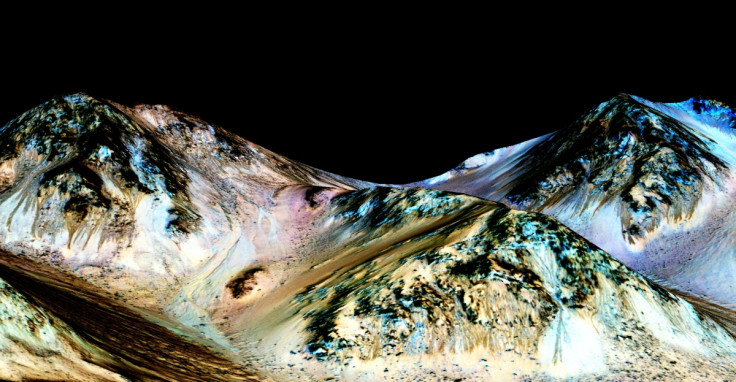Nasa Mars announcement: Does running water on Red Planet mean we will find alien life?

Nasa has revealed its strongest evidence to date for running water on Mars. The space agency teased at their find at the end of last week, saying it had solved a mystery with the announcement due today (28 September).
The mystery was that data from the Mars Reconnaissance Orbiter shows the Red Planet appears to have liquid water flowing intermittently – with flows of water appearing down steep slopes of Martian mountains during warm seasons.
An imaging spectrometer showed signatures of minerals on the slopes, with different streaks appearing on several locations when the temperature on Mars reached above minus 23C. Authors of the study, published in Nature Geoscience, say they have found evidence of hydrated salt minerals, suggesting the flows are briny.
But what does this mean? Scientists have been looking for evidence of water on Mars for many years. The latest findings validate what many researchers have long suspected – while it has long been known liquid water was once abundant on Mars, whether or not it was still there today was another question.
The presence of running water raises further possibilities about life on Mars. Scientists say the hydrated minerals are perchlorates, salts derived from perchloric acid. Some perchlorates are known to stop liquids from freezing. On Earth, they are normally found in the desert.
Research from earlier in 2015 also pointed to the possible presence of liquid water on Mars. Morten Bo Madsen, associate professor and head of the Mars Group at the Niels Bohr Institute at the University of Copenhagen, found calcium perchlorate in trace evidence of liquid water in the Gale Crater.

Study author Javier Martin-Torres told IBTimes UK at the time that if liquid water could persist at such a low altitude as the Gale Crater, it could probably be found in regions across the planet. He said: "We know there are perchlorates all over the planet. If conditions for brine formation are in the crater, they should be in the rest of the planet. And the same for the water cycle and exchange with the atmosphere.
"We know there are organisms on Earth that can live in brines. We know there may be groundwater on Mars also. Now we know the brines can migrate, there may be a possibility there will be a salty water environment somewhere deep below the surface, but we won't be finding that with this mission, and it will be difficult to find in the future."
Commenting on the latest study, several scientists – including those partaking in the Nasa press conference about the find – have said the presence of running liquid water could point to life on Mars.
Alfred McEwen, a planetary geologist at the University of Arizona and senior author on the study, said: "It's very likely that there's life somewhere in the crust of Mars — microbes. But it's where is it, how accessible is it, and maybe the first thing we can find is on the surface. But to me the possibility of finding life in the subsurface of Mars is very high."
Michael Meyer, the lead scientist on Nasa's Mars exploration programme, told the Guardian: "There is liquid water today on the surface of Mars. Because of this, we suspect that it is at least possible to have a habitable environment today."
In a statement, he continued: "It took multiple spacecraft over several years to solve this mystery, and now we know there is liquid water on the surface of this cold, desert planet. It seems that the more we study Mars, the more we learn how life could be supported and where there are resources to support life in the future."
© Copyright IBTimes 2025. All rights reserved.






















